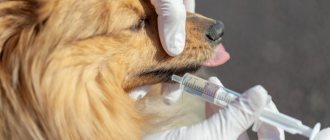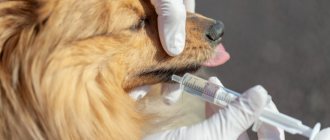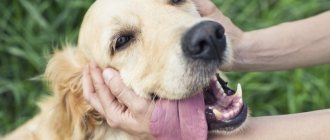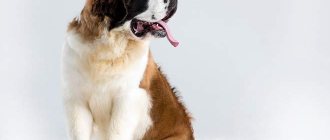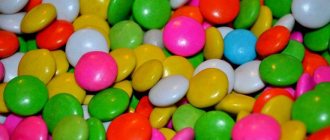Compared to all other dog breeds existing in the world, the breed called Labrador Retriever stands out for people because it is intelligent, easy to train, quite large, and capable of becoming the best companion for humans.
Initially, according to historical facts, the Labrador Retriever breed was bred for the purpose of using it for hunting, which is confirmed by numerous photos and videos. But in the modern world, such dogs have become an indispensable assistant not only for hunting, but also for blind people as a guide, rescuer and simply a pleasant companion.
What does a pet need?
Labradors have topped the list of most popular breeds for a number of years. As dog experts explain, these dogs are chosen for their innate love for people. In order for a playful puppy to turn into a family pet, it will be necessary not to scare, but to provide the dog with a comfortable stay in the house.
Labrador Retrievers are dogs with endless amounts of energy, making them great pets for active families. But if puppies don't get enough exercise, they can quickly become bored. This often leads to destructive behavior in the Labrador - unmotivated barking, chewing foreign objects, destroying furniture, armchairs, and chairs.
Rules for communicating with a pet:
- walk for at least one hour;
- play actively with the dog;
- explore new streets, neighborhoods, squares, parks.
If the puppy lives in a private country house, it must be physically stressed. He needs daily jogging, training, and overcoming obstacles. By finding the right use of your pet's activity, you can get an affectionate creature.
A Labrador in an apartment needs walks even more than a dog that plays in the garden during the day.
This is interesting: Features of keeping a Labrador outdoors during the cold season
Active outdoor training should take more than 60 minutes.
In addition to training, you need to consult with veterinarians and choose a balanced diet for your baby. Considering that a dog’s body develops in stages, nutrition is selected individually for different ages. If a young puppy eats food that does not contain enough calcium, this risks rickets and other extremely unpleasant ailments. On the other hand, when an older dog does not receive enough vitamins, chronic diseases will develop faster. The pet must be regularly brought in for a medical examination; a specialist will be able to determine whether a particular food is suitable for a four-legged friend.
What to feed?
The Labrador is an omnivorous dog and eats everything the same as its owner, but there will be little benefit from such feeding, because the dog needs complete and regular nutrition. The pet's body must receive the required amount of proteins, fats, carbohydrates and vitamins in the correct proportions every day.
If you want to feed your dog dry food , seek an opinion from a specialist ; often the composition of such food is balanced and does not require additional additives or minerals, but you can prepare treats with your own hands.
The number of feedings for a puppy is from 4 to 6 per day , food intake for an adult Labrador at home, veterinarians recommend reducing it to twice a day.
Important! The diet should include: meat, fish, cereals, dairy products, vegetables.
There are established proportions for feeding a Labrador retriever; everyone can calculate for themselves how much of certain foods are needed for their pet.
For 1 kilogram of Labrador retriever weight you need:
- 15 grams of meat;
- 5 grams of carbohydrates;
- 1 gram of fat.
The meat is suitable both boiled and raw , it all depends on the dog’s tastes. Use beef, chicken, turkey or lamb. You can boil the stomach; it contains many useful amino acids and minerals. It is better not to give bones to your dog.
Fish is also suitable both raw and boiled . Before serving the product, do not forget to remove the bones. Choose sea and lean fish.
Cereals are a source of carbohydrates and will be an excellent side dish for your pet. Do not give your Labrador oatmeal or pearl barley. Barley is poorly absorbed by the body, and oatmeal can become an allergen.
Vegetables : potatoes, zucchini, carrots and other vegetables can be cut or grated and added to the porridge.
Unlike humans, a dog does not need to add a lot of salt to its food ; a small pinch is enough.
Important! Well, the most important thing is water. Your Labrador should always have fresh, clean water in his bowl. Don't forget to change it regularly.
Table of height and weight of Labrador by month
| Age, months | Weight, kg | Height at withers, cm. | Chest circumference, cm. | Head circumference, cm. | Muzzle circumference, cm. | Muzzle length, cm. | Pastern girth, cm |
| 1 | 3.4-3.8 | 23-23.5 | 37-38 | 27-28 | 17 | 3.5-4 | 9 |
| 2 | 7-8 | 30-32.5 | 45-56 | 29-32.5 | 20.5-22 | 4.5-5.5 | 10.5-11 |
| 3 | 12-14 | 39.5-42 | 51-56 | 34-36 | 23-24 | 6-7 | 11.5-12 |
| 4 | 17-19 | 44-46 | 60-64 | 38-39 | 24-26 | 7-8 | 11.5-12 |
| 5 | 21-22 | 48-51 | 66-68 | 41-42 | 25-27 | 7.5-8.5 | 11.5-12.5 |
| 6 | 24-26 | 50-55 | 67-70 | 42-43 | 27-28 | 7.5-9 | 11.5-12.5 |
| 7 | 26-28 | 52-56 | 69-74 | 43-44 | 28-29 | 7.5-9 | 11.5-13 |
| 8 | 28-30 | 54-57 | 70-76 | 45-46 | 28-30 | 7.5-9 | 11.5-13 |
| 9 | 29-32 | 54-58 | 70-77 | 46-48 | 28-31 | 7.5-9.5 | 11.5-13.5 |
| 10 | 30-36 | 54-58 | 70-84 | 46-55 | 28-32 | 7.5-10 | 11.5-14 |
| Adult | 30-40 | 54-58 | 70-86 | 46-56 | 28-32 | 7.5-10 | 11.5-14 |
Height at the withers of Golden Retrievers: for males - 56-61 cm, for females - 51-56 cm.
It is worth noting that the data given in the table is approximate. All dogs are different, some grow up to a year, others up to 6 months, below are the average parameters for the ratio of height and weight.
How to accustom to a home environment?
Caring for a young Labrador puppy is more of a pleasant daily chore than a dull procedure. The main thing is to organize a space at home in which the small pet will be “in its place.” This is his abode, it is inviolable. Children should not play there; its corner should not be moved around the apartment. The same goes for food. It is important to leave a container of clean water in the house during the absence of people; it should be changed 2 times a day.
Expert opinion
Anna Abramenko
An avid dog lover. Experience in veterinary medicine since 2009.
Ask a Question
Many owners, when leaving for work, leave a bowl of food and water, worrying that their pet will starve. This is absolutely impossible to do.
Not only can a dog make a mess, but he also risks harming himself. If food particles get into the water, the fermentation process may begin. The Labrador Retriever drinks a lot, often. In the absence of clean liquid, it will look for any. Acidified water can become a source of poisoning. And this is another visit to the veterinarian, which is not only financially expensive, but also a lot of stress for the pet.
Read the article: Life expectancy of Labradors at home
Possibility of being kept outdoors
Experienced dog breeders and veterinarians unanimously say that keeping a Labrador on the street is absolutely not harmful.
The breed is able to adapt even to severe cold or unbearable heat. For information. Breeders still recommend placing your pet in a house, since without attention and affection the dog will simply waste away.
If there is no other option and it has been decided to organize a home for your pet in the private sector, that is, in the yard, it is very important to take care of the dog constantly and give it maximum attention. It is strictly forbidden to move a dog from home to street or vice versa. These manipulations will cause stress in the dog and may even lead to illness.
Many people are interested in how to care for a Labrador if he lives on the street. First of all, it is important to understand that this dog is not suitable for being kept on a chain. The best option is a spacious enclosure with an insulated booth.
Being kept on chains has a negative impact on the psyche
Toilet training
To avoid unpleasant surprises, a 2-month-old purebred puppy must be walked every 2 hours. The main thing is to wait for the dog to relieve itself, and only then take it home.
Later, when the dog grows up, the periods between walks need to be increased. By the age of six months, the pet can safely go outside 2 times a day.
Expert opinion
Anna Abramenko
An avid dog lover. Experience in veterinary medicine since 2009.
Ask a Question
You need to feed your dog after a walk, not before it. A well-fed animal will not run actively, which means it will not receive the necessary physical activity.
Survey of the month
Who is smarter than a cat or a dog?
Read the expert opinion here
Liked? Please rate the article!
To main
Playful and cute Labradors are known to many people - it is simply impossible not to pay attention to them on the street. This dog's kind look and friendly character have made the breed very popular. If you decide to make such a friend, you should know how to properly care for him. And we will answer most of your questions about keeping a Labrador.
Advantages and disadvantages
When a large dog lives in an apartment, you can really evaluate the pros and minor disadvantages of keeping it.
Positive sides:
- the need to lead an active lifestyle (moreover, a restless breed should be abandoned if this is a disadvantage);
- Dogs of this color get along well with children, are positive, and socialize quickly.
Flaws:
- Labradors shed heavily;
- the need to create a stable schedule.
Features of living in an apartment
To keep a dog in an apartment, the owner must have a lot of free time and, most importantly, the desire to spend it with his pet. As mentioned above, Labradors are a very active breed that can even become fat if not exercised. You can save your dog if:
- run with your pet every day;
- constantly visit specialized areas created for the most active pastime and communication of dogs;
- Conduct joint training daily.
Essentially, the breed is suitable for athletes or people leading an active lifestyle.
A sedentary lifestyle can lead to obesity
Creating a Safe Environment
To prevent your dog from harming itself, it is important to initially prepare for keeping it in the house. When a puppy of 2 months appears in a new family, its natural curiosity can play a cruel joke on it. Such a baby still does not understand what can be chewed and what cannot be chewed. The task of all family members is to control so that the dog cannot get medicines, chemicals, or needles. This is the minimum list of things that will have to be monitored daily.
Those items that may be harmless for children (shampoo, toothpaste, soap, washing powder) are dangerous for the young body of a Labrador. Retrievers are naturally curious and constantly explore their surroundings. Certain changes must occur in the home environment; it is advisable to move all items dangerous to the puppy into higher boxes, first aid kits first.
This is interesting: Stages of development of Labrador puppies up to one and a half years old
Walking
Daily walks are not just a pleasant time spent with your pet in the fresh air before and after work. This is daily work, systematic training. At home, dogs are often very bored and their muscles stagnate. This is especially true for Labradors. Given their natural energy and temperament, a leisurely walk in the park is more likely to harm the dog than to help him exercise.
Many people often think of dog training as fun and believe that it is enough to just teach your pet to sit, give a paw, or fetch a stick. But adjusting the animal's behavior is also part of training.
When performing daily exercises, it is important to teach your four-legged friend basic skills, namely how to behave with guests, how to react on the street when the owner fastens the collar, and how to behave in the presence of children. It is these problems that are solved during the daily interaction of the dog with the owner.
The characteristics of the breed dictate the behavior. Most Labradors really love to learn. It is useful to take advantage of the innate learning ability by starting to train the dog as soon as the puppy has adapted at least a little to the house. You can work on basic obedience commands on your own; an alternative is to enroll in a school where a trainer will also work with the dog. It is easier to study with a professional and in a group, since the little student also gains the skills to communicate with others like him.
Many Labradors have a negative attitude towards leashes and collars, prefer to pull the owner along with them and refuse to walk calmly on the left side.
Necessary procedures
Many owners are interested in the question of when to bathe a Labrador puppy for the first time. After a small pet has found its new home, it is not recommended to give the baby water treatments for 2 days. Labrador is one of those breeds that does not require regular bathing at home. Outdoors is a completely different matter. These creatures love bodies of water.
Although there is no need to bathe your Labrador puppy regularly, you should definitely wash his paws after a walk.
Story
Canada is considered the birthplace of Labradors. The first representatives of this breed lived on the island of Newfoundland, helping local fishermen. Labradors arose from the systematic crossbreeding of setters, curly-coated retrievers and foxhounds.
At the end of the 19th century, the breed was described and standardized. The beginning of the 20th century - Labradors were included in the registers of the English Kennel Club. In 1941, the National Retriever Club appeared in the USA. Labradors came to the USSR in the early 1970s.
Nutrition
At first, a Labrador puppy really needs to get food more often than an adult dog. But leaving a bowl of food in your absence is absolutely forbidden. This will teach the puppy the rule that you can eat whenever you want and as much as you want. This means you can forget about a balanced diet. In addition, out of boredom, a Labrador may start playing with food.
Expert opinion
Anna Abramenko
An avid dog lover. Experience in veterinary medicine since 2009.
Ask a Question
The dog needs to be scolded according to the “here and now” principle. If the “crime” occurred in the absence of the owner, the baby may no longer remember what exactly he did, which means he will not understand at all why he is being punished.
Possible diseases
Dogs of this breed can be carriers of the following hereditary diseases that arose during the breeding process: diseases of the eyes, bones and joints. Some people experience dysplasia of the hip and elbow joints, which appears due to improper care of the baby.
Dysplasia occurs from an excess of calcium, phosphorus or due to obesity. Retinal atrophy - loss of vision in the dark or complete loss of vision, occurs due to heredity or can be acquired.
On average, pets live about 10 or 12 years. For a dog this is a relatively short period of time. Short life expectancy is also associated with a susceptibility to cancer.
Practical advice
Labrador Retrievers' eagerness to learn, playfulness, affectionate nature, and affection for children make Retrievers candidates for family pets. But it is important to plan the behavior of the whole family a few days in advance before the puppy arrives in the house:
- you need to think about who will be with the dog during the holidays;
- it is important to find a veterinary clinic somewhere nearby, preferably around the clock, which, if necessary, will be convenient to contact;
- For the first time, you should definitely get food for your pet;
- It is recommended to collect an emergency first aid kit, sorbents, cotton wool, vitamins for the dog, iodine;
- think over a place for the Labrador, and also provide space for bowls for food and water.
By following these recommendations, the owners will greatly facilitate the first days of a new family member in their apartment.
Reviews
Having read a lot about the Labrador, we were ready for a little bundle of joy to appear at home. And now we are confident that by following the tips and recommendations, you can raise a healthy, and most importantly, happy dog. The breed is ideal for active people with children.
Labrador is a cool dog, and troubles cannot overshadow the time spent with such a miracle. The main thing is to plan what to do with vacations and how to schedule walks, and the rest is little things.
Thanks to tips on caring for a Labrador, and this is the breed we have, the whole family began to spend more time outdoors. We discovered gorgeous parks in the surrounding area, and now the whole family is grateful to this miracle.
The Labrador Retriever is a breed that leaves behind positive emotions and a cheerful mood. But harmony can only be achieved if all family members are involved in raising this dog.
What do Labrador Retriever dogs look like?
If you are planning to buy a dog that is beautiful in appearance, has an impeccable character and a proportionate body, then you should pay attention to the Labrador Retriever breed, which has a maximum of advantages and practically no disadvantages.
The Labrador Retriever breed is today considered one of the most popular among people all over the world. This is a strongly built dog, the height of which at the withers can reach up to 57 cm. The appearance of such animals is bright and memorable:
- The Labrador's chest is wide and muscular.
- The Labrador's limbs are strong.
- The neck and head of the Labrador Retriever dog are strong and voluminous.
Such indicators of better appearance indicate the nobility of the breed, which cannot leave people indifferent. In a purebred dog, according to the standard, the transition from the forehead to the muzzle should be clearly pronounced, the muzzle should not be pointed, and the bite of the teeth should be scissor-shaped. A Labrador Retriever's teeth should be medium in size and its nose should be wide. The dog's eyes are predominantly medium in size and are often hazel or brown in color. The Labrador Retriever's ears hang, but their size should not be large, closer to medium. They are very mobile by standard and are always able to convey the mood of a four-legged pet.
The Labrador's tail is of medium length and its distinctive feature is its thick appearance at the end, which becomes narrower towards the tip. The Labrador has short hair, which is also very thick and tough. And the undercoat of such pets has waterproof properties.
The color of a Labrador is always monochromatic, but it can be:
- Black color.
- Fawn color.
- Chocolate color.
- Golden color.
In exceptional cases, a small white spot may appear on the chest coat of a Labrador Retriever, regardless of whether it is fawn or any other color.
Do you have your own unusual and interesting story?
Share it with us soon, we will publish it!
share a story




